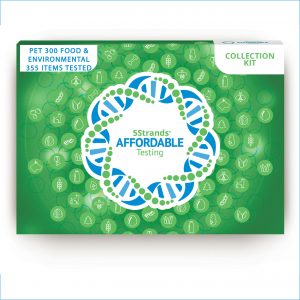Diarrhea and vomiting are frequent health hazards that can interfere with your dog’s daily life. What do you do when an emergency like this occurs?
Dog diarrhea and vomiting fall under the category of gastrointestinal issues. These health problems can happen to any breed. Unfortunately, there are dozens of causes for these health problems.
They can vary from the simplest, like dietary inconsistencies, to more severe ones like kidney failure. The key in dealing with these health problems is noticing the problem early and working on possible treatment methods.
This article holds the answer to all your problems: what causes this and what you need to do to make this problem go away.
What Triggers Dog Diarrhea and Vomiting?

Your dog can have an “upset tummy” as well. And it will probably let you know by vomiting somewhere in the backyard or showing signs of diarrhea.
But how does my dog end up with these symptoms? Where do they come from?
The truth is – there is more than one reason for the unpleasantness your dog is experiencing.
Let’s list them down one by one:
CERTAIN GROCERIES: That’s right – both you and your dog can get sick from an expired product you picked up at the grocery store the other day. To make matters worse, the ingredient doesn’t necessarily have to be out of date. It can simply be toxic to your doggo.
BACTERIA IMBALANCES: By bacterial imbalances, we mean that there happens to be an excessive amount of bacteria in your dog’s bowel. Dogs with bacterial overgrowth will have trouble absorbing and digesting food. This results in a health condition called SIBO (Small Intestinal Bacterial Overgrowth).
STRESS AND ANXIETY: Not all breeds cope well with stress and anxiety. For all we know, there has to be an “exhaust valve,” and if the matter is worse than imagined, it can result in gastrointestinal issues.
VIRUSES: When viruses attack your dog’s organism, they can end up making a huge mess: disrupting the overall functioning of their internal organs. Sometimes these bacterial infections can be so intense that they lead to severe chronic illnesses and pneumonia.
PARASITES: The name says it all! These are intruders that attack your dog’s organism and live off the food that is primarily meant for the dog. Parasites can attack both the external and internal surfaces of your dog.
DIABETES: Diabetes is a metabolic disorder that can occur in all breeds. The stages and risk depend on the type. A dog with diabetes will have trouble digesting and converting the food it consumes into energy. This can lead to stomach issues.
INTESTINAL OBSTRUCTION: This is also known as a gastrointestinal blockage. It completely prevents liquids from passing through the gastrointestinal tract. When the blockage reaches its highest point, it can result in frequent vomiting or diarrhea.
Human Foods – Increasing The Risk

From the list above, one particular category increases the risk of diarrhea and vomiting in dogs more than others. I’m talking about human food.
Yes, certain groceries that you consume daily pose a significant risk if they get into the paws of your doggo.
Watch out for the following ingredients. They are more than ordinary – they are dangerous to your dog!
Dairy products cause more than just an “upset tummy.”
You have probably seen owners pour milk in their dog’s water bowls and watch them drink it in a matter of minutes. Well, milk doesn’t get on well with all breeds. Some dogs happen to be “lactose intolerant,” which prevents them from digesting dairy products.
The thing is, this intolerance can also cause some external itching and redness – and who wants additional problems?
Beef might be healthy, but the allergies don’t go away.
Although feeding your dog beef sounds like an excellent way of ingesting the needed proteins, it doesn’t always work out. Some breeds are unfortunately allergic to beef. Surprisingly, this is one of the most common food allergens, so get round to checking how your dog reacts.
Sometimes, a plain egg is enough to cause your dog allergies.
If you notice that your dog doesn’t react well after eating eggs, this means that it has probably had an allergic reaction to the proteins contained in the egg yolk. This is a serious matter that should be taken to the vet ASAP.
Even the chicken can’t be trusted.
Just like beef, your dog can develop an allergic reaction towards proteins contained in plain chicken meat – and this is as basic as it gets. Nevertheless, take your dog to the vet to get tested for any other possible allergens in meat.
Food allergies depend on the breed, and some are more vulnerable than others.
Here’s a list of 10 dog breeds that are more susceptible to food allergies than others:
- American Pit Bull Terrier
- Bichon Frise
- Boxer
- Brussels Griffon
- Bull Terrier
- Cocker Spaniel
- German Shepherd
- Golder Retriever
- Labrador Retriever
- Maltese
If your dog is on the list, you better hurry and go get that allergy test!
Effective Treatment Methods for Dog Diarrhea
Luckily, Veterinary Medicine has developed much in the past few years, and there are constantly new and more effective methods for treating widespread dog health problems.
If we focus solely on gastrointestinal issues like diarrhea and vomiting, there are a couple of ways you can treat this successfully.
It’s important to mention any previous medical history of your dog.
For instance, if you witness that your dog has eaten something that made it feel uneasy, try giving it a couple of hours. Sometimes a good rest will do just fine. This is if you’re lucky.
If you notice that your dog is showing signs of diarrhea and vomiting simultaneously, it’s time to hit the road and go straight to the vet’s ordination. There, your dog will probably be given some medication.
Tylosin is a known antibiotic that does wonders to your dog’s organism and practically renews it after a couple of pills. Another solution includes probiotics.
Nevertheless, you should NEVER give your dog any pills at your own risk.
If diarrhea and vomiting are getting out of hand, your vet might administer gastroscopy – immediate scooping. In rare cases, your dog will have to proceed with surgery.
Anyhow, it’s always better to take the problem straight to the professional rather than to deal with it on your own. Allergies are tricky, and in most cases require more than just a “short rest.”
Allergy Testing – Mandatory in Maintaining Health

It’s true – dog allergy tests are lifesavers. But in order to determine whether your dog is allergic to certain groceries in your household, for example, you need to know the signs.
The signs that show that your dog is battling allergies are:
- constant licking
- itchy ears
- sneezing
- biting skin and body parts
- inflammation
These are some of the milder symptoms.
Symptoms like vomiting and diarrhea require immediate intervention!
Since food is one of the leading allergy triggers, here are dog allergy food tests you can turn to for desired results.
5Strands Pet Treat Test
You might not be aware of it, but your pet might be surrounded by constant allergens contained in everyday treats.
What do you do?
You get the 5Strands Dog Nutrition Allergy Test and save your dog from hair loss, inflammation, and dry skin.
This allergy test is:
- painless
- accurate
- suitable for both dogs and cats
5Strands Food Intolerance Test
Sometimes, the most fundamental ingredients like beef, chicken, or wheat can cause severe allergic reactions in our dogs. Your dog can start showing signs of constant vomiting, diarrhea, and nausea.
With the “5Strands Trial Food Test,” you can cover 250+ grocery items, including beef, grains, wheat, additives, etc.
This dog food allergy test is
- recommended by vets
- easy to use
- stress-free
Upgrading Your Dog’s Diet

After you are all done with your dog allergy testing, it’s time to get your dog’s health back on track. And the best way to do that is by improving its diet.
Here’s a couple of tips that will help you avoid future problems when your dog’s diet is at stake:
- Avoid the marketing hype and investigate the label.
- Include whole-grain foods like fruits and vegetables.
- Feed your dog ingredients rich in antioxidants – apples.
- Limit the number of treats per day – the key is in moderate intake.
- Keep your dog’s water bowl full 24/7.
- Avoid feeding your dog cooked meat (we’ve all seen how that ends)




